Who are the ten primary avatars of Lord Vishnu (Dashavatara) in Hinduism?
Also known as Narayana or Hari, Lord Vishnu is one of the main deities of Hinduism. Lord Vishnu is the preserver. He is the protector, preserver, and transformer of the universe. There are 1000 names of Lord Vishnu.
The Hindu goddess of wealth and prosperity is Lord Vishnu’s wife.
Garuda is the vahana, or primary mount of Lord Vishnu.
Shesha or Adishesha is the king of serpents on which Lord Vishnu sleeps in his adobe Vainkuntha.
In the events of chaos or whenever evil overpowers the world, the Lord takes an avatar or incarnation to preserve the world’s cosmic order. He becomes the preserver of the dharma.
There are countless avatars of Vishnu in the form of hermits, Manus, and devas. But the dash avatars remain the prime. Dasha means ten and avatars means incarnations.
Matsya
The first avatar of Lord Vishnu. Matsya in Sanskrit means fish. It is the fish avatar of Lord Vishnu.
Manu and the fish
During the Satya Yug, when people became irreligious and disorderly, the Gods decided to do the renovation by causing great floods. Lord Vishnu gave the guidelines to Lord Brahma as Vedas.
The Vedas were lost while Lord Brahma while following their guidelines and performing recreation, grew tired and slept.
Lord Vishnu descended to earth as Matsya to find the lost Vedas and perform the restoration task. A fish becomes visible on a day when water is brought for Manu’s ablutions. The fish asks Manu for protection from bigger fish. In return, it offers him protection from great floods planned by gods for restoration.
Manu promises to protect the fish and transfer it into a pot of water where it grows. After some time, Manu transfers the fish to a ditch for its growth. Manu transfers the fish to the ocean once it is big enough.
Lord Vishnu revealed himself and asked Manu to build a boat by the time of the great flood and include every species of plants and animals to perform the restoration task.
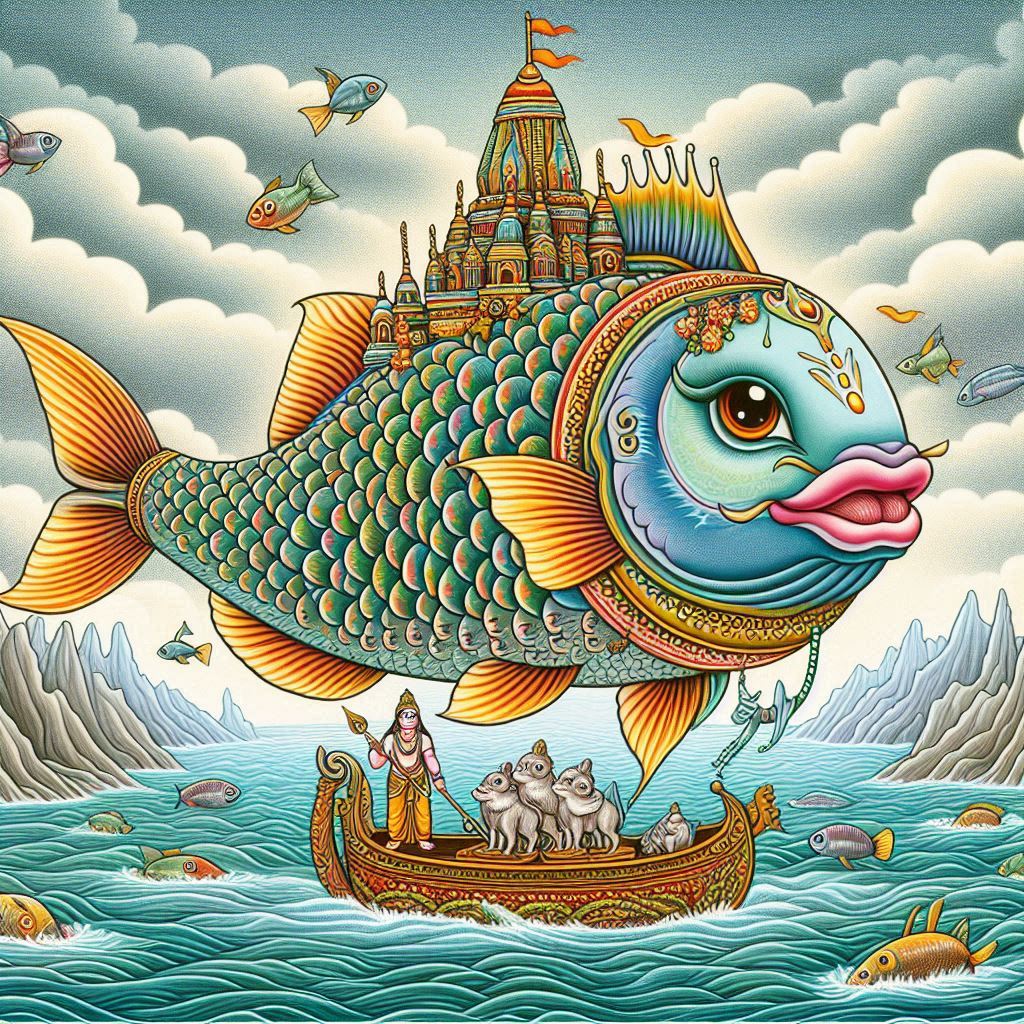
On the day of the flood, Manu visits Lord Matsya. Manu ties the horn of Lord Matsya to the boat. The fish carried Manu to the highlands, after which he re-established the life by performing yajnas. Also, Lord Matsya found the lost Vedas.
Lord Matsya instructed Manu the rules to rebuild the world with new rules and values which became Manu’s memories or Manusmritis.
Symbolism
Lord Vishnu preserved the knowledge by taking this avatar. He showed his commitment to rebuilding the world and setting up the rules. Also, this avatar symbolizes protection like Lord Vishnu protected the Vedas and living beings. The fish symbolizes adaptability and the ability to go through life’s challenges.
Kurma
It is the second avatar in which Lord Vishnu incarnated as a turtle.
Samudramanthan (The churning of the ocean)
The king of Swarga (Heaven), Lord Indra was once traveling on his divine elephant Airavata when he came across the sage Durvasa (Durvasa Rishi). The Rishi offered him a garland which Lord Indra accepted. He kept the garland on his elephant’s tusk. Irritated by the bees which got attracted because of the scent of the flowers, the elephant threw the garland which enraged Durvasa Rishi. The sage cursed Lord Indra that all Devas would lose their fortune, wealth, strength, and energy.
Due to this, the Devas experienced several defeats at the hands of the Asuras. They went to Lord Vishnu for help who advised them to form an alliance and churn the ocean in search of Amrit (nectar of immortality) and share. Lord Vishu however assured Devas to arrange Amrit for them.
They used Mount Mandara as a churning rod. The churning rope used is Vasuki, the Naga. During the churning, Mount Mandara began to sink and needed a strong foundation which Lord Vishnu offered in the form of Kurma avatar. During the churning process, a lot of celestial objects and beings emerged like Kamadhenu (the wish-granting cow), Airavata (Indra’s elephant), Goddess Laksmi (the goddess of prosperity and wealth), Apsaras, Dhanvantri (vaidya of devas) carrying Amrita (nectar of immortality), Halahala (poison) etc. Halahala was consumed by Lord Shiva to save three worlds from its effects due to which he is known as Neelkantha.

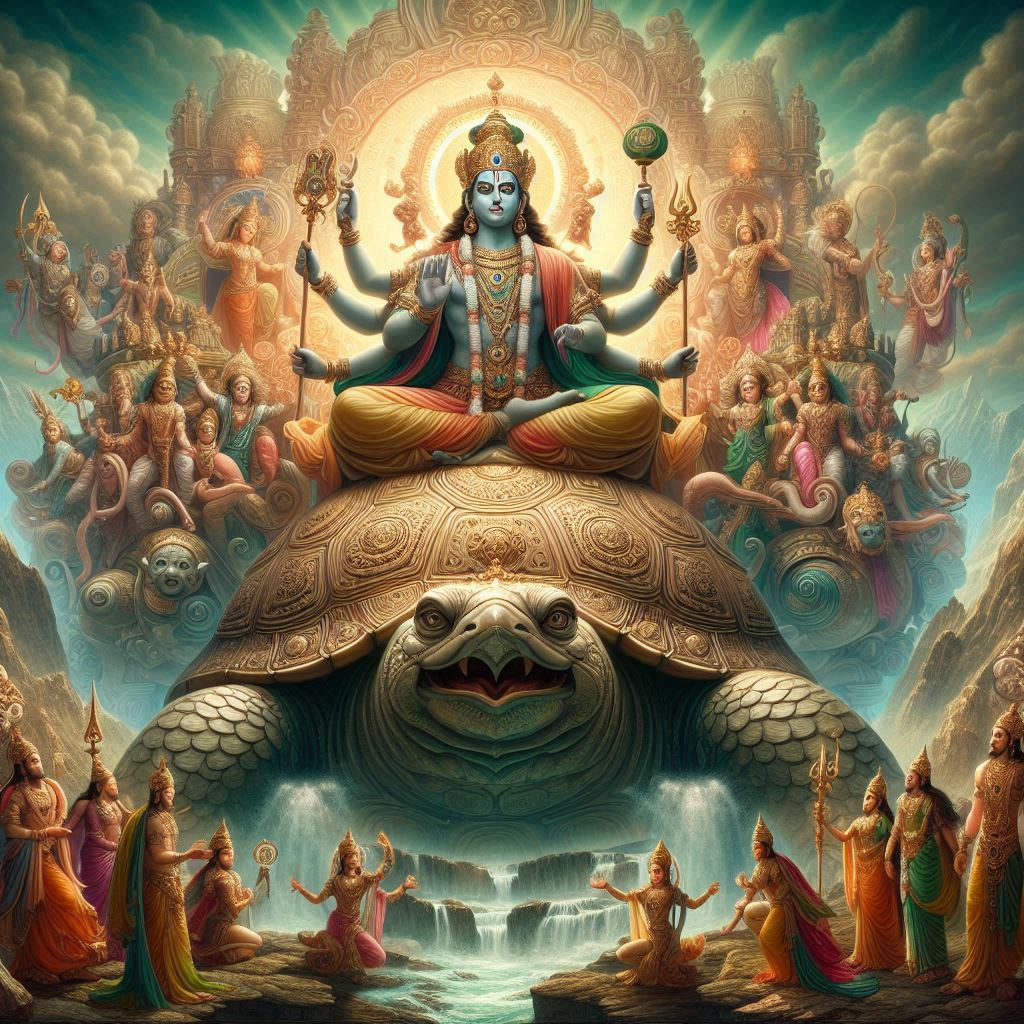

Symbolism
The steadiness with which Kurma avatar of Lord Vishnu holds Mount Mandar tells us to be stable and committed even in difficulties. Ocean symbolizes consciousness which reflects both good and bad thoughts as Amrit and Halahala. The Gods and Demons are good and bad tendencies of human life. Like them, we are also in a tug-of-war between our good and bad thoughts.
Varaha
The third avatar of Lord Vishnu is an Indian boar.
Origin of Hiranyaksha and Hiranyakashipu

The Kumaras, Lord Brahma’s four sons, visited Lord Vishnu in Vaikuntha Loka while he was taking a deep rest. The guards of Lord Vishnu (Jaya and Vijaya) thus, stopped the Kumaras from meeting him. Kumaras cursed them to be born in human form.
Guards pleaded to the Kumaras, saying they were doing their duties. They asked Lord Vishnu to reverse the curse.
Lord Vishnu proposed two options to them: they can either take birth as Lord’s enemies three times or Lord’s friends seven times as humans, after which they can return to Vaikuntha. The guards accepted to be Lord Vishnu’s enemies. In the first birth, they were born as Hiranyaksha and Hiranyakashipu during the Sat yuga.
Hiranyaksha
Hiranyaksha was Lord Brahma’s devotee. Lord Brahma granted him a boon after he worshipped for a long time, ensuring that no divine or mortal being could kill him. Hiranyaksha started creating havoc on earth and in Deva Loka.

Out of fear, Lord Indra and his Devas took refuge on earth. To harass Devas, Hiranyaksha grabbed the earth and submerged it into the Patalok. Manu and his wife went to Lord Brahma for help, which he refused because he gave the boon to Hiranyaksha. Lord Brahma meditated to Lord Vishnu to achieve the motive.
Lord Varaha
Boar form was taken by Lord Vishnu to kill Hiranyaksha. He went half boar half human form to kill the demon.
He went to the depths of the ocean to rescue Mother Earth. Hiranyaksha marched towards the sea where he encountered Lord Varuna, the god of the ocean, and challenged him in battle. Lord Varuna convinced Hiranyaksha that only Lord Vishnu was worthy of battling him. On his further way, Narada appeared and Hiranyaksha asked about Lord Vishnu’s whereabouts. Narada told him that Lord Vishnu was rescuing Mother Earth in the depths of oceans.
Meanwhile, Lord Varaha dug his tusk in Mother Earth into the ocean bed and started to rise on the surface. On seeing this, Hiranyaksha became very angry and challenged Lord Vishnu to a duel.
Lord Vishnu as Lord Varaha, kept Mother Earth on its axis and blessed her. The fight between the demon and the Lord lasted for a long time. Lord Brahma issued a warning stating that Hiranyaksha must be killed before sunset. With his supreme might, Lord Varaha landed a powerful blow at the demon’s face with his fist. Hiranyaksha fell over and met his demise.
After completing this task, the avatar returned to the heavenly adobe of Lord Vishnu.

Symbolism
The avatar symbolizes courage to confront challenges. It symbolizes the commitment to face dark sides and fight for righteousness. Whenever darkness and cruelty try to overpower, divine power intervenes to restore goodness and strike the balance. The story encourages us to believe in good and do the right even in the case of adversities.
Narasimha
The fourth avatar of Lord Vishnu in the form of part lion part human.

Hiranyakashipu
Hiranyakashipu and Hiranyaksha were brothers born to Diti (daughter of Daksha) and sage Kashyapa because of the curse of four Kumaras. Lord Vishnu’s Varah avatar killed Hiranyaksha. Because of this, his brother Hiranyakashipu decided to gain the boon of invincibility from Lord Brahma. He performed tapas for that.
He impressed Lord Brahma so much that Lord Brahma granted him a boon of his choice. Hiranyakashipu asked for immortality, to which Lord Brahma refused. The demon then asks for a boon of near invincibility. He asks not to be killed by either a living or nonliving entity, weapon, inside or outside his house, day or night, neither on earth nor in air, demigod or demon, human being or animal.
After this, Hiranyakashipu started a reign of terror all over. He forced everyone to worship him. No one could dare to face him. He aspired to wield over the three worlds.
Prahalad
To fulfill his desire to conquer the three worlds, he did penance. While he was away doing so, Indra and his devas attacked his home. Narada, the divine sage, intervened to protect his wife Kayadhu whom he described as sinless. Narada took Kayadhu with her unborn child under his influence. He gave transcendental instructions to her and the child in her womb. After the birth, Prahalad (the child) became devoted to Lord Vishnu under his influence.
Hiranyakashipu was not happy with his son’s devotion to Lord Vishnu. Prahalad tried to propagate Vaishnavism by instilling devotion to Lord Vishnu in his fellows. Enraged by this, his father wanted to kill him many times. His father tried to poison him, tried to get him killed by soldiers, tried to place Prahalad in a room full of snakes, and throw him from a valley into a river, but all these efforts were futile.
Holika and the festival of Holi

Hiranyakashipu’s sister, Holika had a boon that protected her from fire’s harm. So, he tried to kill his son with her help.
He had his son sit on Holika’s lap on a burning pyre.
Prahalad chanted Vishnu’s name, who protected him. The fire burnt Holika, but Prahalad remained unharmed.
People all over the country celebrate this event as Holi.
Hiranyakashipu’s Death

Deity installed at ISKCON, Greater Kailash (Delhi)
Lord Vishnu’s powers saved Prahalad every time. He refused to acknowledge his father as the supreme lord of the universe. Prahalad claimed that Lord Vishnu is omnipresent, and his father asked him if he was in the pillar nearby. Prahalad prayed to Lord Vishnu and agreed that the Lord is in this pillar and even the minute dust particle.
Enraged by this, Hiranyakashipu smashed the pillar with his mace, and Lord Vishnu in the form of Narasimha appeared from the pillar attacking Hiranyakashipu to save Prahalad. Since Narasimha incarnated as part human part human, he attacked Hiranyakashipu at twilight (neither day nor night) on the threshold of the courtyard (neither indoors nor outdoors) kept him on his thighs (neither air nor earth) and using his claws (neither living nor nonliving) killed the asura.
After Hiranyakashipu’s death, no one could calm the wrath of Lord Narasimha. Lord Narasimha had Prahalad presented in front of him upon God’s request. After this, Lord Narasimha appeased his wrath.
Symbolism
Narasimha is a symbol of inner strength, power, courage, and balance of power.
Vamana
The fifth avatar of Lord Vishnu is Vamana, meaning dwarf or short in stature.
Bali, the king of Asuras and great-great-grandson of Diti and sage Kashyapa defeated Lord Indra and conquered the earth and heaven. Devas went to Lord Vishnu for help. Lord Vishnu incarnated as Vamana in the form of a Brahmana as a son of Aditi and sage Kashyapa.
Lord Vamana attended Bali’s sacrifices and rituals. King Bali asked Vamana what he wanted. Vamana requested three steps of land from Bali to which he agreed.
After this Vamana grows in size and in two strides, he covers all of existence (the earth and the sky). In the third stride, there was no place to keep his foot, for which Bali offered his head. Vamana appeared in his original form of Lord Vishnu and blessed Bali. Bali received blessings from Lord Vishnu, who reinstated him as the king of Patalok and restored the reign of the Devas.
Symbolism
The avatar symbolizes that your greatness does not lie in size, but in your intentions.
Parashurama
The sixth avatar of Lord Vishnu is Parashurama (Rama with axe). He is one of the seven chiranjivis, or seven immortals. He is a great warrior, sage as well as a teacher.
Lord Parashurama was born as a Brahmin and has traits like a warrior. He is also called Brahmin-Kshatriya. He is the son of Jamadagni (one of the saptarishi or seven sages) and Goddess Renuka. As mentioned in Mahabharata, Parashurama was the guru of Karna, Drona, Bhishma, and Rukmi.
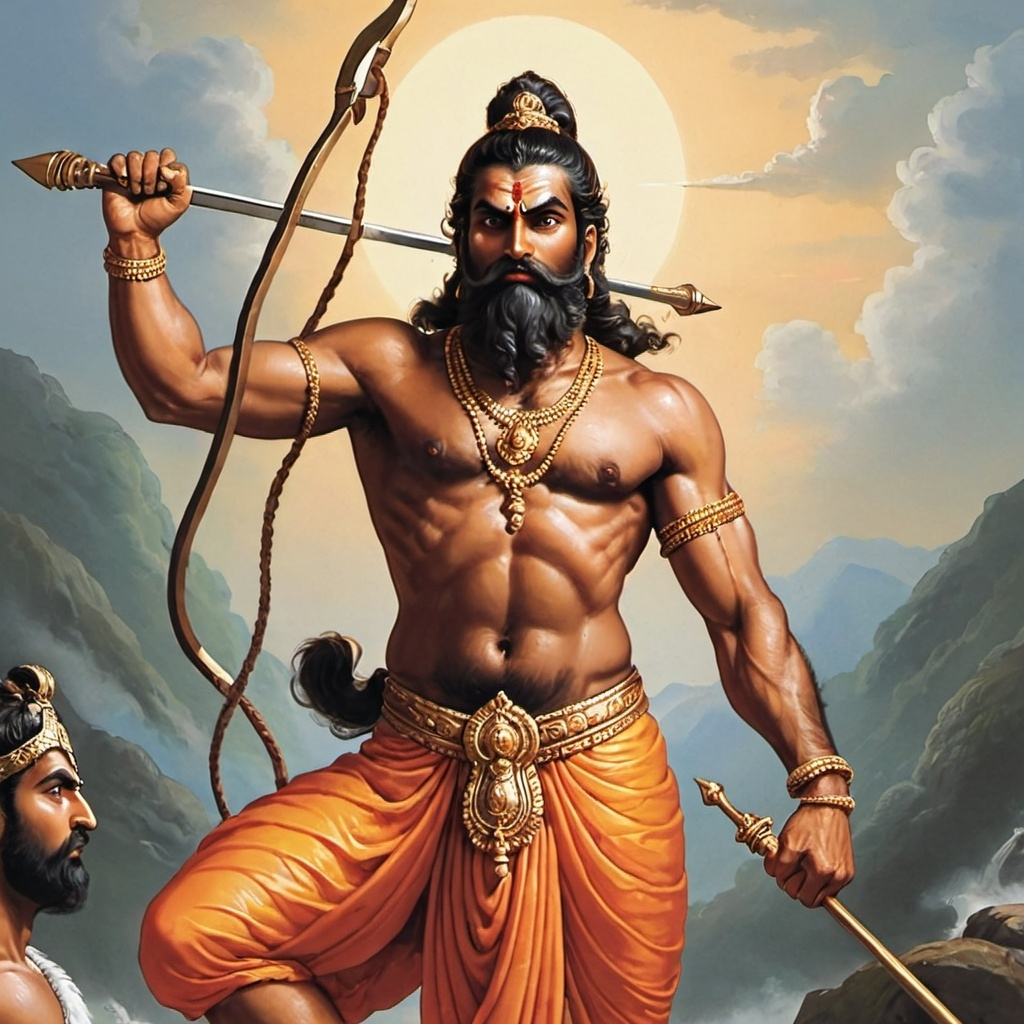
Fight With Kshatriyas
Kartavirya Arjuna, the son of King Swaminarayan and King Kartwarya, received 10,000 blessings from Dattatreya after his penance. Due to this, he installed himself with pride and started committing atrocities to people.
With his army, he once crossed the ashram of Jamdagni. Sage Jamdagni had a wonderful cow named Kamadhenu. The cow helped Jamdagni in managing the ashram and life. Seeing that, Arjuna asked the cow from the sage. The sage refused to give him the cow. Enraged, Kartavirya Arjuna attacked the ashram and tried to take the cow forcefully. But the cow returned to heaven. When Parashurama learned about the event, he went to destroy the army of Kartavirya Arjuna.
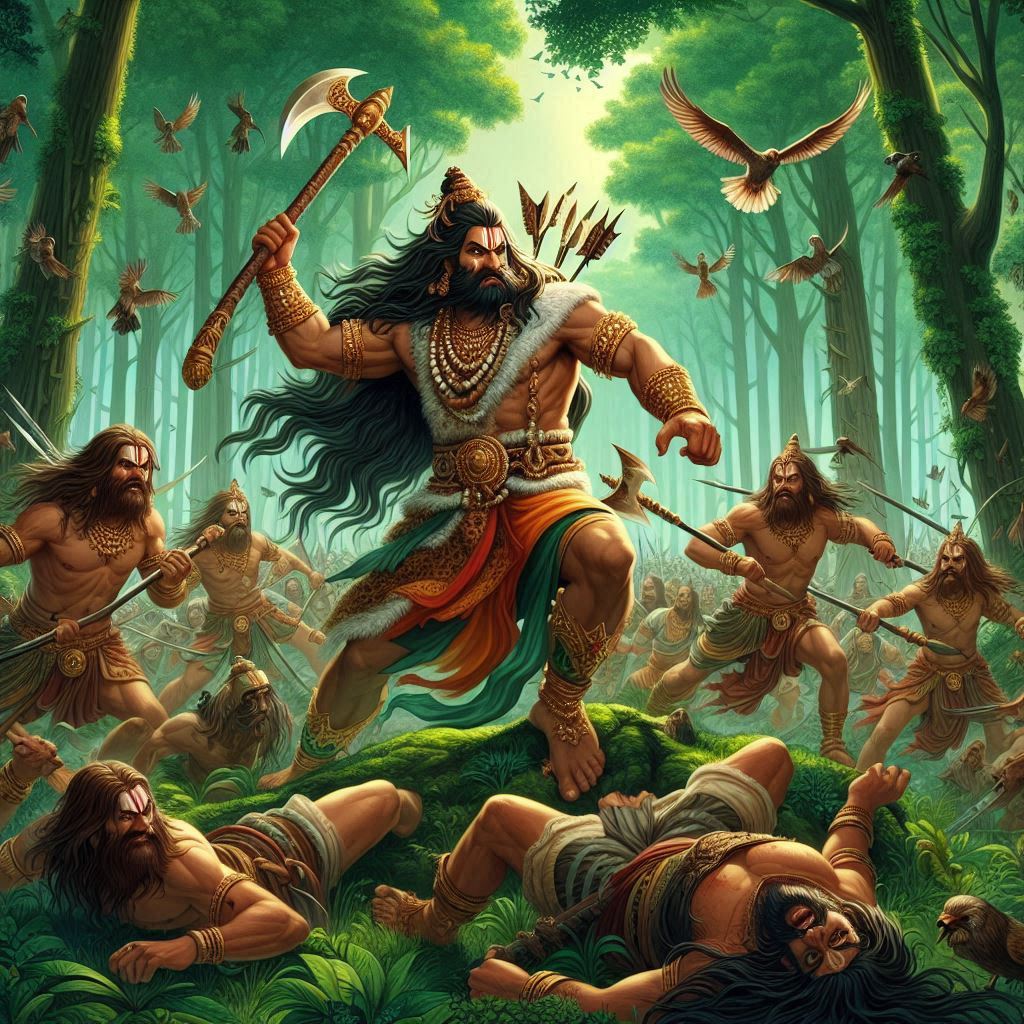
One day, Kartavirya Arjuna’s son attacked Jamadagni again and killed him. Furious with this, Parashurama killed Arjuna’s all sons and aides.
He pledged to destroy the Haihaya Kshatriya clan and attacked them 21 times, thereby destroying them completely and filling 5 ponds with their blood.
Immortality
Lord Shiva gave the immortality of Lord Parashuram. Because of this, he will stay alive till the end of time.
Symbolism
Lord Parashurama symbolizes justice and protection.
Rama
Also known as Ram, Ramachandra, Lord Rama is the seventh avatar of Lord Vishnu.

Source: ISKCON, Greater Kailash (Delhi)
Birth
According to Ramayana, Lord Vishnu incarnated as Lord Rama King Dasharatha and his first wife, Kaushalaya in the city of Ayodhya, India to get rid of Ravana’s menace. Lord Rama had three brothers.
Marriage
He got married to Devi Sita, the daughter of King Janak. King Janak organized a Swayamvar (a marriage in which a woman chooses her husband) in which he kept a condition that she would marry a prince who would break the string of Pinaka (the bow of Lord Shivas). Lord Rama and his brother Lakshman who were there in the nearby forest to perform Yajna participated in the Swayamwar on request of Vishwamitra. He broke the string of the bow on which Lord Parashurama appeared and challenged him for combat which Lord Rama obliged. Lord Parashuram returned and Lord Rama got married to Devi Sita. In addition, Lord Rama’s brothers married Devi Sita’s sisters.
Promise
Kaikeyi, the mother of Bharata and the third wife of Dasharatha reminded him about the two boons which he promised to give her whenever asked. She asked for 14 years of exile for Lord Rama. Also, she asked that Bharata would preside over the kingdom. Dasharatha grieves at her request. Rama accepts the orders of his father and decides to go into exile leaving his kingdom. He informs his wife Devi Sita about it and she insists on coming with him. On hearing this, his brother Lakshman also decides to come with them.
Exile
Lord Rama stayed in Chitrakuta initially with his wife and brother in the hermitage of sage Vashishtha.
Lord Rama met Shabri, who offered him half-eaten berries. He consumed them with love.

After ten years of exile, Lord Rama went to Panchavati, which happened to be surrounded by many demons. Shurphanakha the sister of Ravana one day happened to meet Lord Rama. She tried to seduce him but Lord Rama being loyal to his wife refused her offers. She tried to threaten Devi Sita as well. Lakshman intervened and cut off her nose to protect her. Lord Rama and Lakshmana also killed a few of the demon allies of Shurphanakha.
Ravana and abduction
When Ravana came to know about Shurphanakha’s condition, he decided to take revenge. He asked his uncle Maricha for help. Ravana came to Panchavati to execute his plan. Maricha came disguised as a beautiful deer which attracted Devi Sita. Devi Sita requested Lord Rama to get that deer for her. While she was with Lakshman, Lord Rama called out for help. She asked Lakshman to go and assist him. Lakshman, being protective, asked Devi Sita not to cross the line drawn by him for protection in any case. While Lord Rama and Lakshman were away, Ravana came disguised as Sadhu to ask for alms. Devi Sit crossed the line to help him, and Ravana took advantage, abducting her.
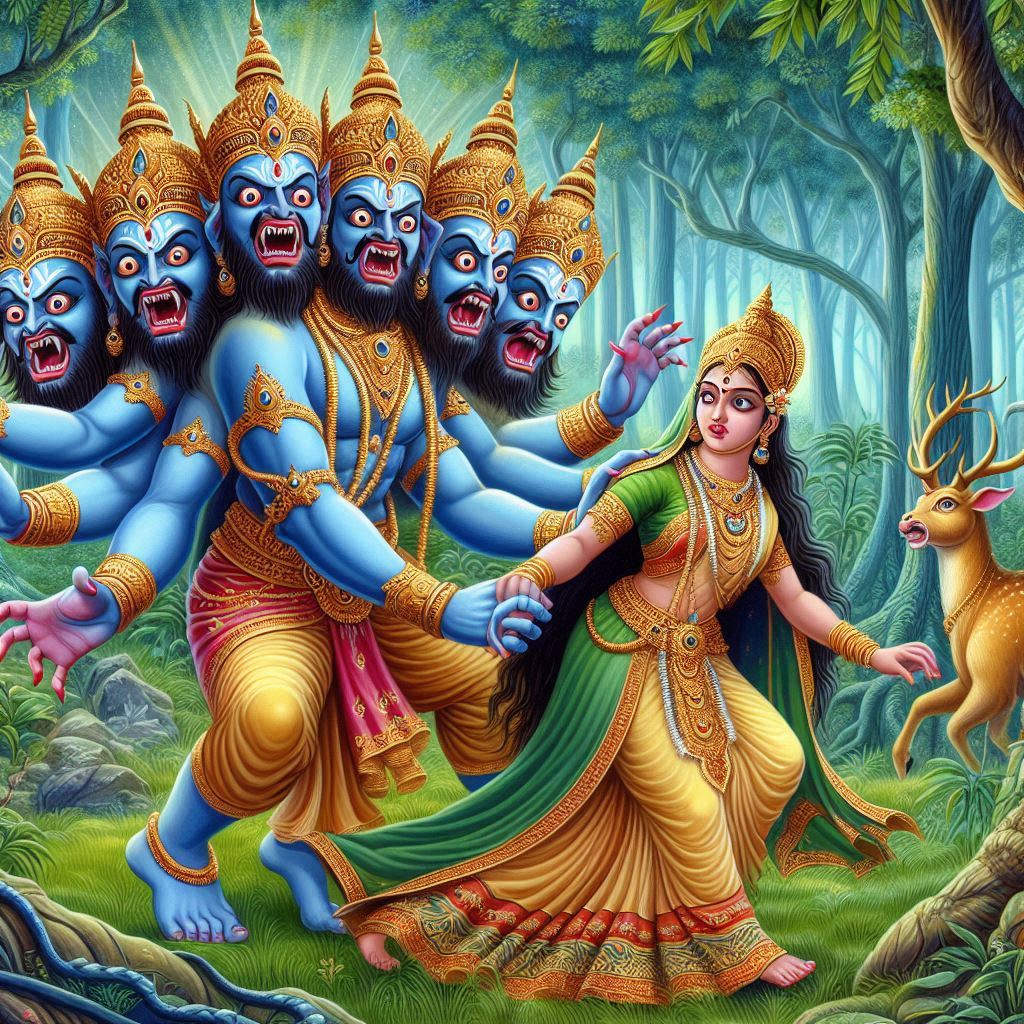
Devi Sita’s Search and War
Lord Rama and Lakshman kept on searching for Devi Sita, traveling south. They met Sugriva, the monkey king. His minister, Hanuman, also helped to search for Devi Sita. Ravana kept harassing Devi Sita to be his wife, which she constantly refused.
On finding Devi Sita’s clue, Lord Rama went with his army of monkeys (Vanar Sena) to fight Ravana and get Devi Sita. The war between Lord Rama’s army of monkeys (Vanar Sena) and Ravana resulted in the death of Ravana, his brothers, and sons, except Vibhishana (Ravana’s brother). They successfully rescued Devi Sita.
Ayodhya Return
Diwali is the celebration of Lord Rama’s return to Ayodhya. His coronation was done and he became the king of Ayodhya. Some individuals raised doubts about the purity of Devi Sita. Due to this Lord Rama renounced his wife and asked her to prove her chastity in front of Agni and asked her to live in exile. She passed the test, thereby proving her chastity. During her exile, she gave birth to Lava and Kusha (Lord Rama’s son). She renounced her life in the arms of Mother Earth once she found Lord Rama accepted her sons.
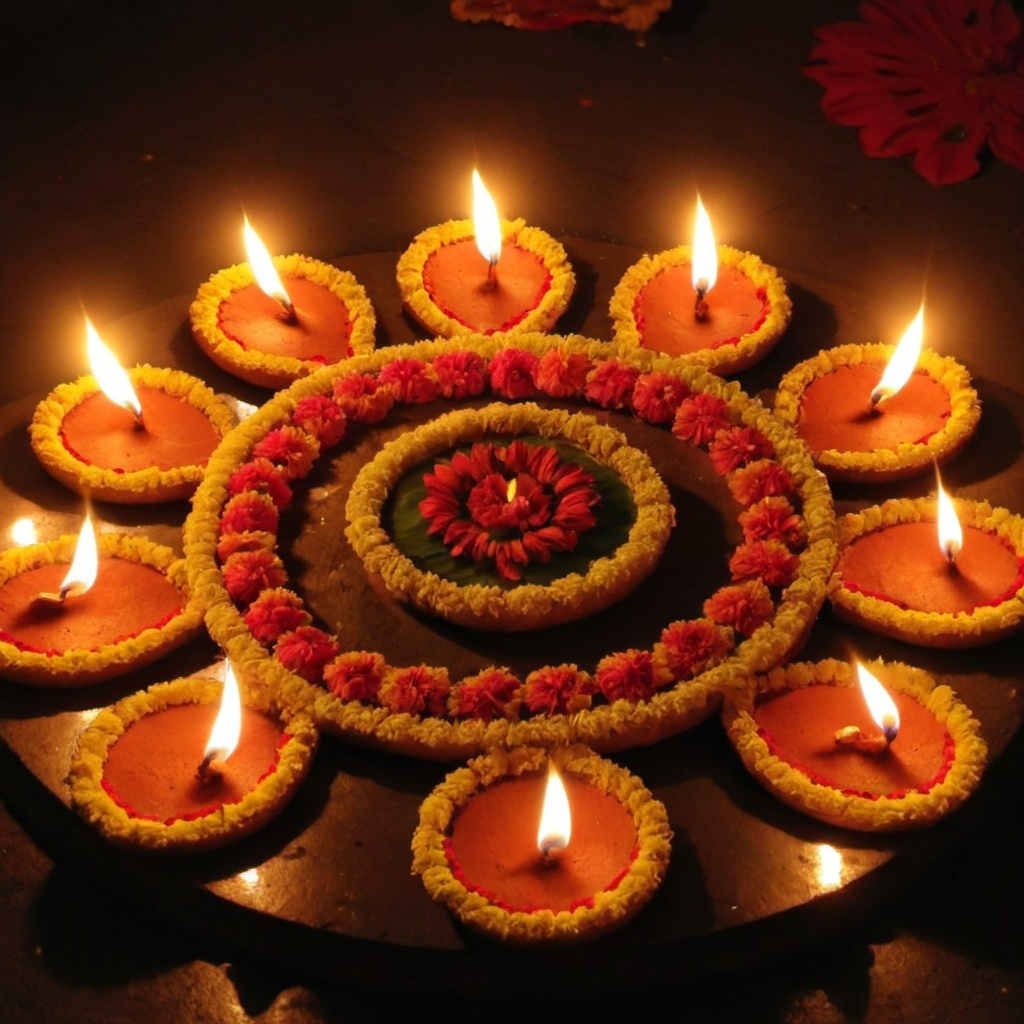
Death
Once Kala Deva disguised as a saint visited Lord Rama’s court and asked for his audience in private. On this, Lord Rama took him to a chamber and asked his brother Lakshman not to be intervened by anyone. He asked if someone who did so would receive the death penalty. Lakshman being a faithful brother guarded the chamber.
Lord Rama asked the saint the reason for his visit on which he smiled and Lord Rama understood that it was his time to renounce this world. Kala Deva appeared in his true form.
Sage Durvasa at that moment appeared and asked Lakshman to have an audience with Lord Rama. Lakshman politely declined his request and didn’t allow him to enter the chamber. On this Sage, Durvasa threatened him to curse Lord Rama if not permitted to meet him. To save his brother from the curse, Lakshman entered the chamber himself.
Lord Rama was taken aback and, on the advice of Kala Deva, he instructed Lakshman to leave the kingdom. Lakshman took Jal Samadhi after being separated from his beloved brother Lord Rama.
After this Lord Rama announced the power transfer to his brothers and sons. He walked into the Sarayu River where he renounced his life and blessed his subjects with liberation.
Symbolism
Lord Rama’s compassion, duty, sacrifice, righteousness, and leadership present him as an ideal man. He fulfilled his dharma and followed his duties as a son, prince, and ruler. Lord Rama extended his kindness, compassion, and empathy towards his fellow beings, be it Vanar Sena or Shabri. He sacrificed his own comforts and personal desires for the greater good.
People regard him as Maryada Purshottom because he embodies the qualities of an ideal son, an ideal husband, an ideal friend, and an ideal brother.
Krishna
Lord Krishna is the eighth avatar of Lord Vishnu. He is a major deity of Hinduism.

Birth
Lord Krishna was born to Devaki and Vasudeva in Mathura. During Devaki’s wedding, it is foretold that Kamsa (her brother) will meet his end by Devaki’s son. Kamsa arranges to kill Devaki’s sons except the last one. Vasudeva carried Sri Krishna (his last son) to Gokul at his friend’s (Nanda) home. He exchanged his daughter with his son. When Kamsa came to kill Devaki’s last son, the child turned into Yogmaya and warned him about this end. Sri Krishna’s birth is celebrated as Krishna Janmashtmi.
Childhood and Youth
Sri Krishna is described as a cow-herder. He is mischievous and often found playing pranks. Nanda Maharaja and other elders of Gokul decided to move to Vrindavan due to constant disturbances caused by demons. Sri Krishna once showed the whole universe in his mouth to his mother Yashoda.
Also, known as Makhan Chor (butter thief) he is also the protector of the people of Gokul and Vrindavan. Sri Krishna killed demons like Putana, Sakatasura, Trinivarta, Bakasura, Aghasura, and Vatsasura on different occasions.
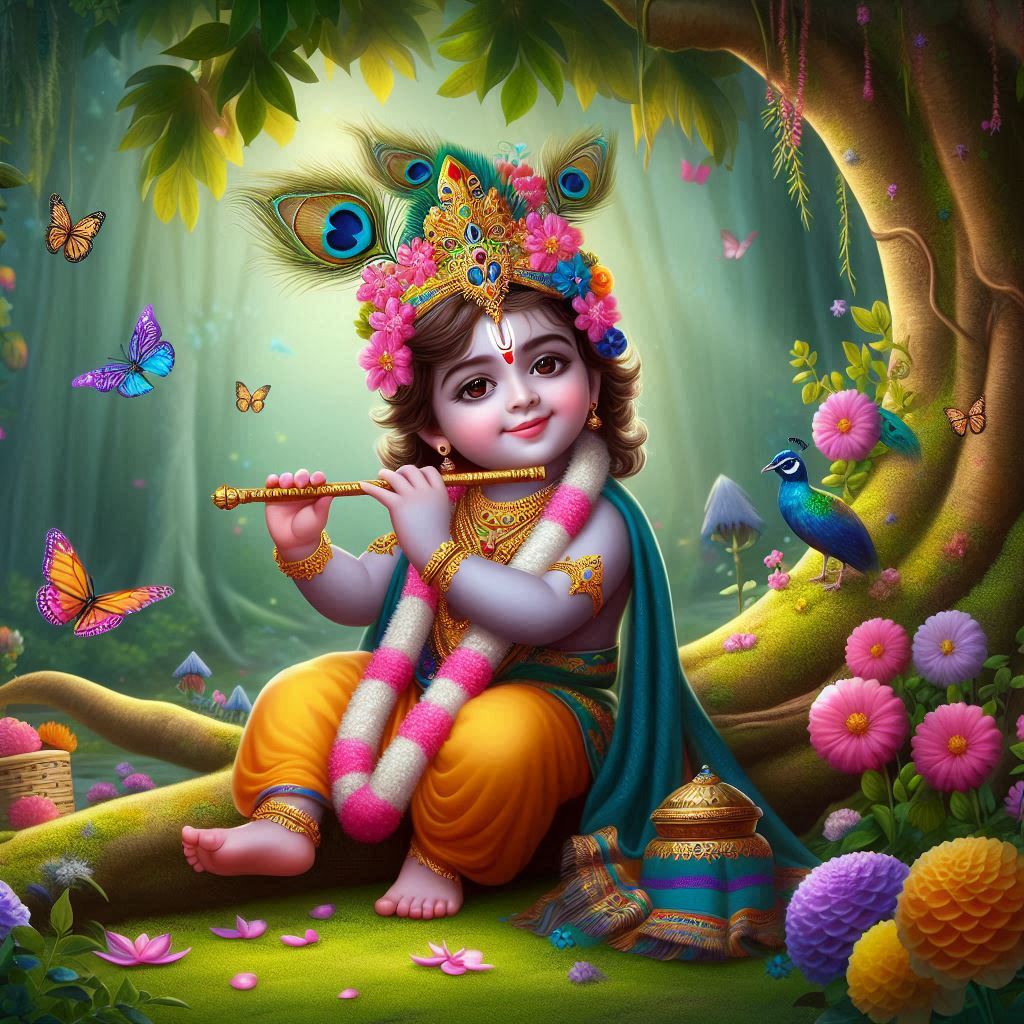
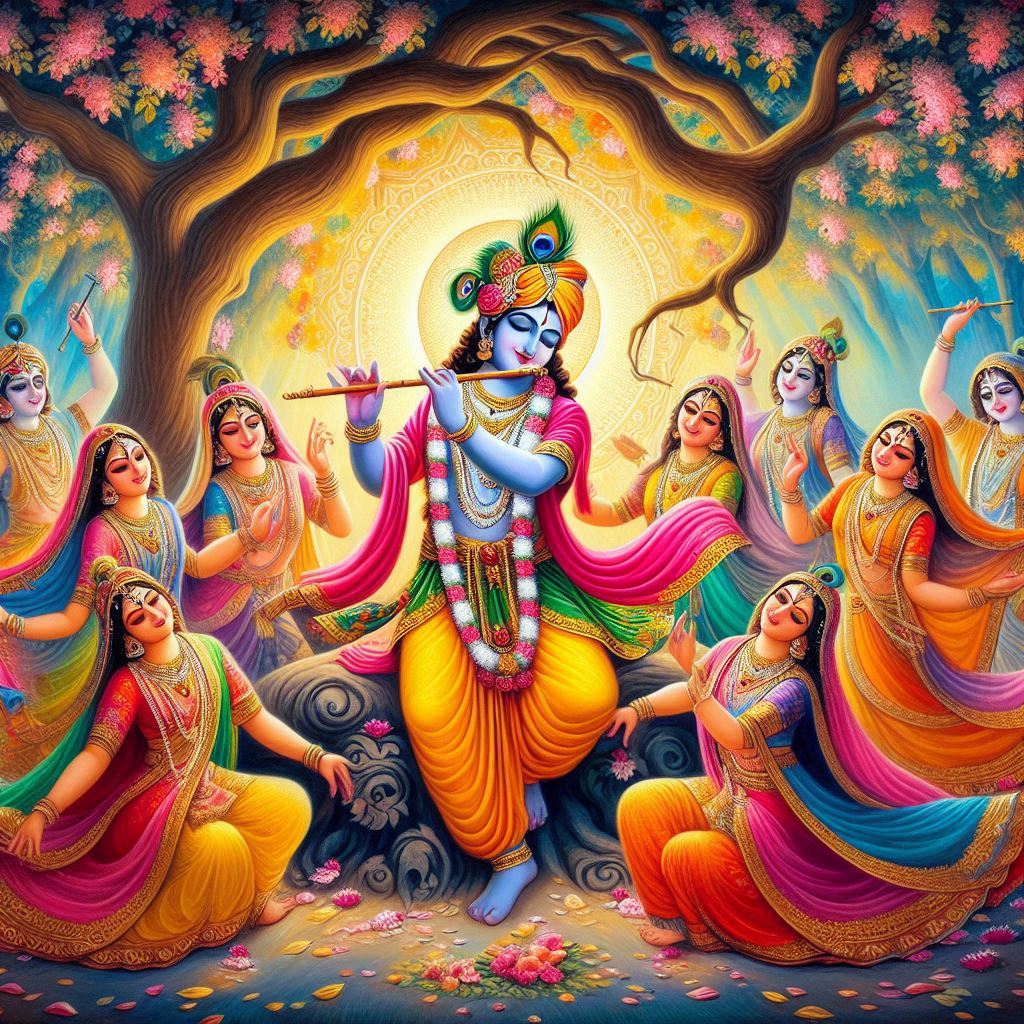
Sri Krishna punished the serpent Kaliya for contaminating the river Yamuna. He lifted Goverdhan Hill to teach Lord Indra a lesson. He also killed demons like Aristaa , Kesi, Vyoamasura.
Lord Krishna is also known for his playful nature with Gopis. Often described playing raslila with them. Whenever Krishna plays his flute, Gopis join him leaving their work and those who cannot join through meditation.
Adulthood
Lord Krishna killed Kamsa and made Ugrasena the king of Mathura. Saandipani Muni gave detailed knowledge to Lord Krishna and Balrama about Vedas, Upanishads, and Upvedas. He established the kingdom of Dwarka. Sri Krishna married Rukmini at her request and Pradyumna was born as their son. He also killed Naraksura and married thousands of women kidnapped by him. Sri Krishna killed Paundraka, Kashiraja, Sudaksina, Saalva, Dantavakra, Viduratha. He received the honor of first worship in the Rajsuya sacrifice which was not tolerated by Sisupala and he spoke evil about him thereby killing him.
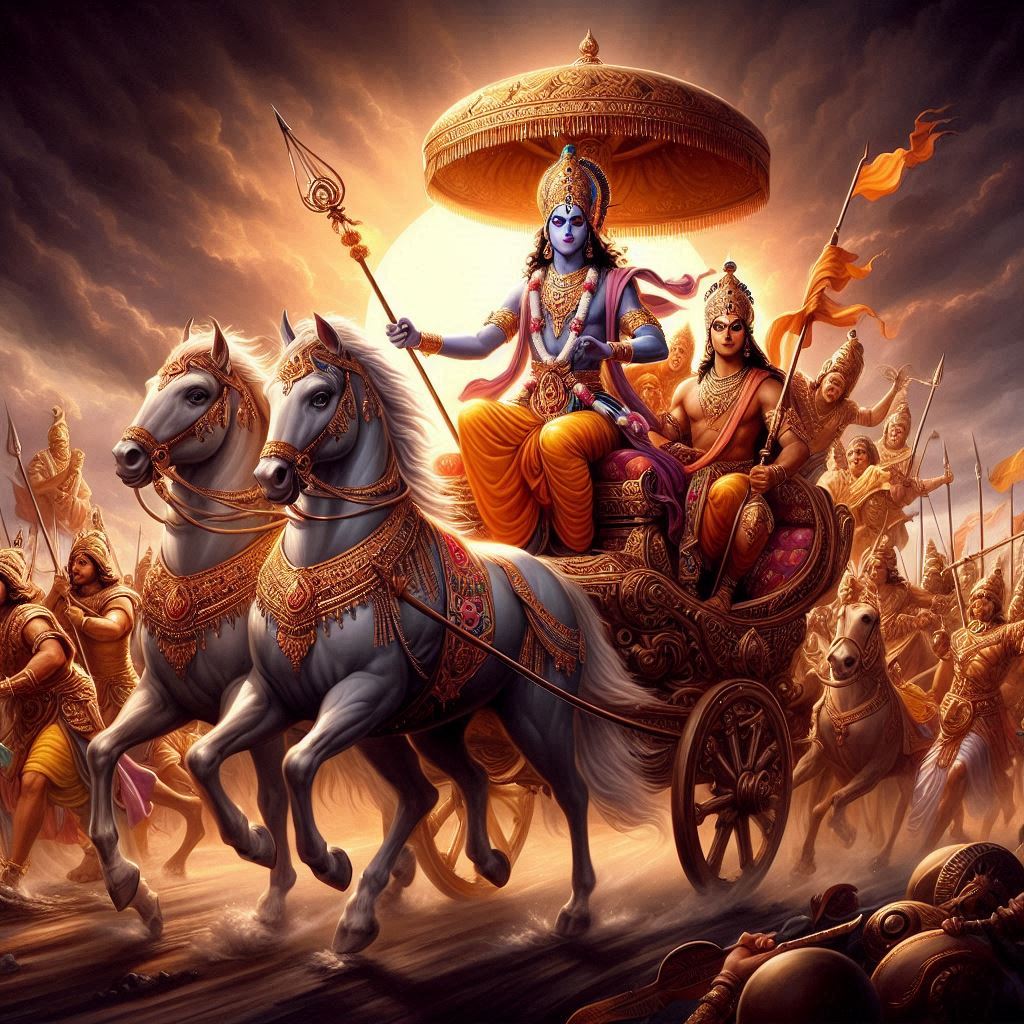
Lord Krishna helped Vasudeva to retrieve his six dead sons. He became the charioteer of Arjuna in the battle of Mahabharata and also imparted the knowledge of Bhagavad Gita to him. Lord Krishna helped the Pandavas to win the Kurukshetra war. He saved Parikishit, the son of Uttara and Abhimanyu.
Death and Fall of the Yadava Dynasty
After the war of Kurukshetra, Gandhari cursed Sri Krishna about the fall of the Yadav Dynasty. People in Dwarka were living a good and prosperous life under Lord Krishna’s rule. Soon the people of Dwarka started misconduct.
Once Vishwamitra, Durwasa, Vashistha, and Narada were on pilgrimage when they went to Dwarka to meet Lord Krishna and Balrama. A group of Yadavas decided to play a prank with them. They dressed Samba, the son of Krishna as a pregnant women asking the saints to guess if it was a girl or a boy. Soon, the saints realized the truth and cursed Yadavas.
Sambha developed labor pains once and gave birth to a mace. Terrified Yadavas went to Akroor and Ugrasena and in the presence of Sri Krishna narrated the events. Akroor ordered to grind the mace into fine powder except for a triangular piece. They cast the powder and piece it into the sea. After doing so, Yadavas went into a state of intoxication after this event.
Fight
After some time, the powder and the piece washed back to the seashore. The piece was swallowed by a fish which was hunted by a hunter who found the piece and created an arrow using that on the other hand, grass was grown at the place where the powder was deposited.
With time, the Sudarshana chakra, Panchajanya shankh, the chariot of lord Krishna, and the plow of Balarama disappeared from earth. One day, Yadavas gathered on the beach, and in an intoxicated state, they started teasing each other, bringing out mistakes with each other. They started hitting each other with the grass growing on the beach.
The grass stems were nothing but blades of mace made of the powder that was in the sea. Due to this, Yadavas got killed instantly. Everyone, except Sri Krishna, Balrama, and Daruka (Krishna’s charioteer), met their demise. When Sri Krishna came to know about it, he sent Daruka to Hastinapur to inform Arjun about the same.


A long serpent came out of the face of Balarama and then Sri Krishna realized his time had come. Sri Krishna was once sitting in a Samadhi when a hunter named Jara entered the forest and mistakenly took it as a deer. He shot an arrow at his foot. When the hunter reached Sri Krishna, he apologized to him. Sri Krishna forgave him and left the mortal world.
The start of Kali Yuga began with the death of Sri Krishna.
Symbolism
Lord Krishna symbolizes love, passion, compassion, patience, tenderness, and love.
Buddha
Lord Vishnu assumed the ninth avatar as Sugata Buddha. He is different from the Gautama Buddha.
As per some theories, he has four hands and holds Lotus, Jaapmala, Vedas, and a vessel to receive alms. Another theory describes him as a bald man with faded clothes sent as a monk.
Tripurasura
Tarakaksha, Vidyunmali, and Kamalaksha, were the sons of Asura Tarakasura. They did a severe penance and asked for a boon from Brahma in which they asked for three forts (each of gold, silver, and iron) made in three worlds that should belong to them and should align in 1000 years, calling it Tripura. If anyone decided to kill them, it should be with one arrow and only when they align.

The asuras got the forts and began to flourish. The gods did not like that and went to Brahma and Shiva for help, to which they refused, stating that they were not doing anything wrong.
Disheartened by this, the Devas went to Lord Vishnu and asked for help. Lord Vishnu said that we can make them follow a religion that is against the Vedas and hence can achieve the motive.
Lord Vishnu then incarnated as Sugata Buddha and imparted knowledge strictly against Vedas. When Tripurasura came under its influence, they stopped worshipping Lord Shiva.
End of Tripurasura
Lord Shiva now concluded that Tripurasura is not devoid of good deeds and it’s time to mark their end. He went with his army to destroy Tripura just when the forts aligned in a line. He used Pashupatastra to kill Tripurasura.
Symbolism
Lord Vishnu rejected the teachings of Vedas for the welfare of humans who were unable to get the true knowledge of Vedas. This shows that our priority should be to follow the path of dharma and restore the same.
Kalki
The tenth and final avatar of Lord Vishnu is supposed to appear at the end of Kali Yuga.
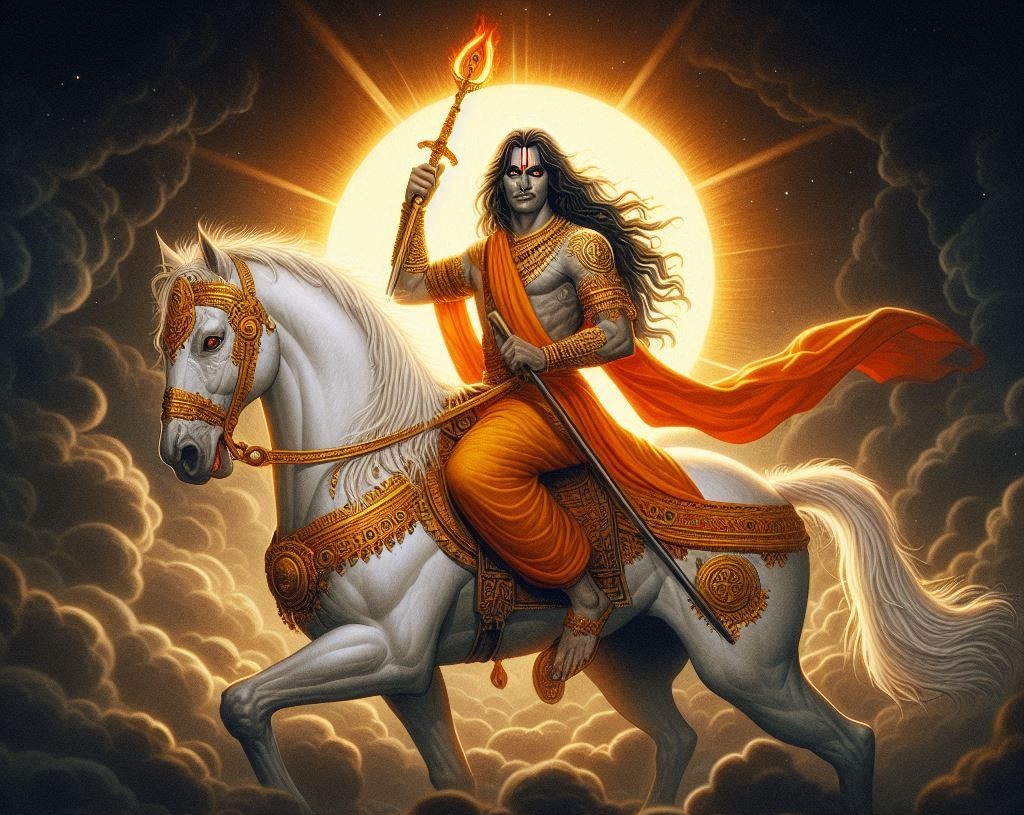
His arrival will mark the end of Kali Yuga and mark the beginning of Satyuga. He will end the darkest and most degenerating stage of Kali Yuga while riding on a white horse and will start a new time cycle. The immortals of Chiranjivis will help him in various stages of his life.
Kalki will take birth in the village of Shambala. He will learn about dharma, scriptures, and karma. Devas, Devis, and saints will give him various accessories, a parrot, and a divine horse to fight evil. He will fight evil and inaugurate the new Yuga, without ending existence.
Symbolism
Kalki avatar symbolizes righteousness, hope, and renewal.
Note:- Most of the images shared in the post are AI generated and are for depiction purpose only.
Related Readings
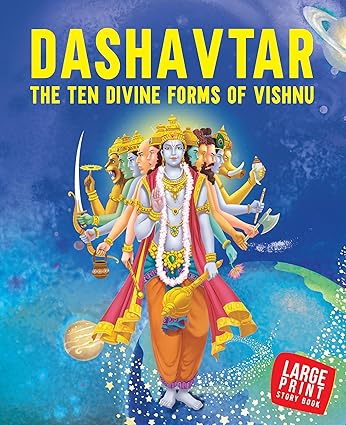
Link to Buy

Link to Buy
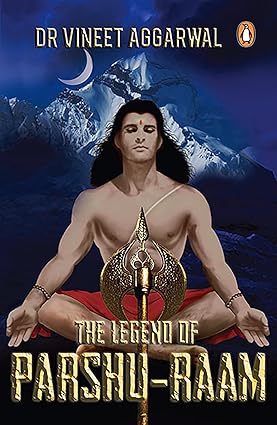
Link to Buy
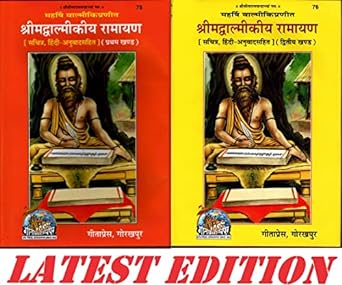
Link to Buy
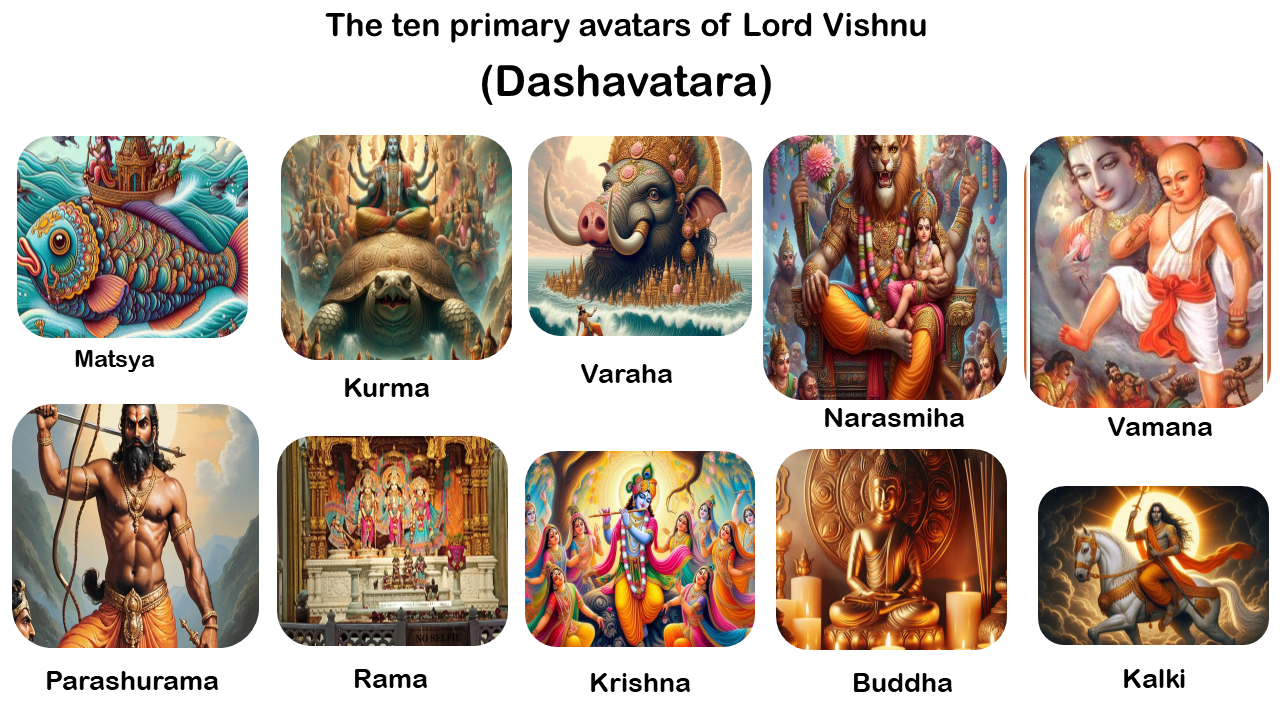
One Comment